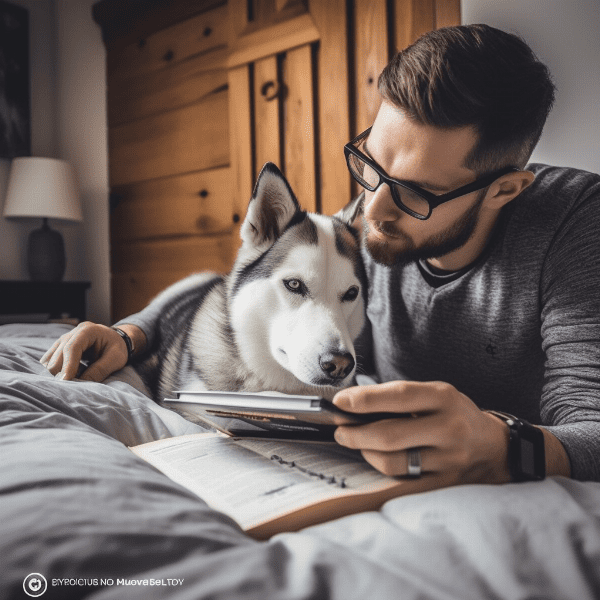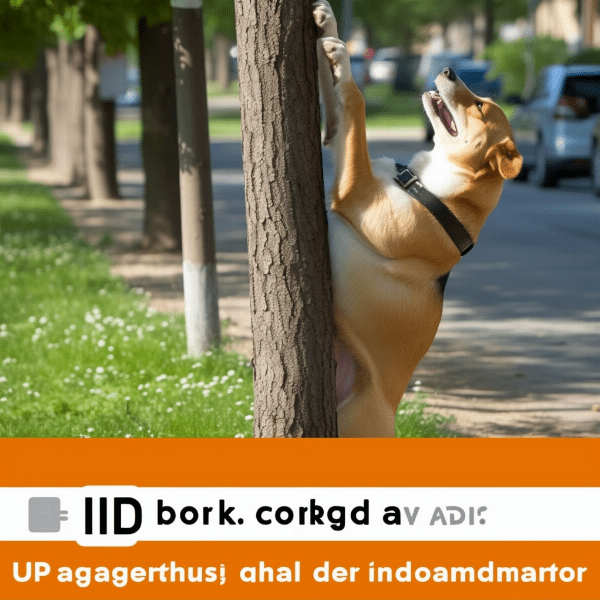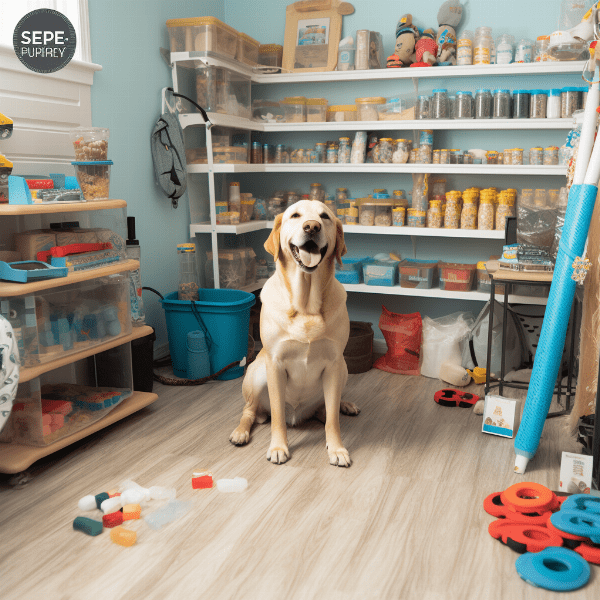Table of Contents
- Understanding the Reasons Behind Dog Marking
- Consistent Housetraining Techniques
- Providing Adequate Opportunities for Outdoor Urination
- Utilizing Crate Training for Prevention
- Avoiding Punishment as a Training Method
- Consistent Positive Reinforcement for Desired Behaviors
- Cleaning Up Accidents Appropriately
- Limiting Access to Problematic Areas
- Seeking Professional Help for Persistent Marking Behaviors
- Maintaining a Consistent Routine for Your Dog
Understanding the Reasons Behind Dog Marking
When dogs mark inside the house, it can be a frustrating and unpleasant experience for owners. However, it’s important to understand that marking is a natural behavior for dogs, and it’s not done out of spite or disobedience. Instead, it’s often a form of communication or a response to specific environmental factors.
Territorial Marking
One of the most common reasons for marking is territorial behavior. Dogs naturally want to mark their territory and claim it as their own, whether that’s inside the house or outside in the yard. This behavior is more common in male dogs, but it can occur in females as well.
Anxiety and Stress
Marking can also be a response to anxiety or stress. If a dog is feeling anxious or stressed, they may mark in an attempt to calm themselves down or to establish a sense of control over their environment. This type of marking is often seen in dogs that are left alone for long periods or in unfamiliar environments.
Medical Issues
In some cases, marking can be a symptom of an underlying medical issue. Dogs that are suffering from bladder infections, urinary tract infections, or other medical conditions may have accidents inside the house, even if they are otherwise housetrained. It’s important to rule out any medical issues before assuming that marking is purely behavioral.
Social and Sexual Behavior
Finally, marking can be a form of social or sexual behavior. Male dogs may mark to signal their availability to females, while females may mark to signal their receptivity to males. In multi-dog households, marking can also be a way for dogs to establish their social hierarchy.
Understanding the reasons behind Dog marking is the first step in preventing it from becoming a persistent problem. By identifying the underlying cause of the behavior, owners can develop a more targeted and effective approach to managing it.
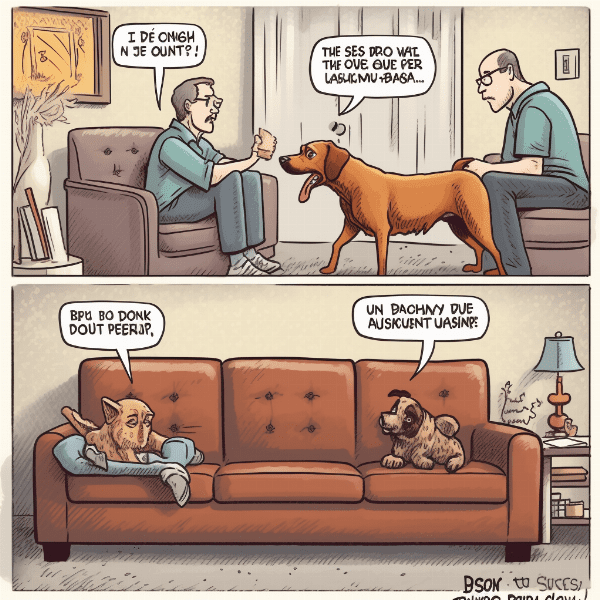
Consistent Housetraining Techniques
Consistent housetraining is essential for preventing dog marking in the house. This involves teaching the dog where it’s appropriate to go to the bathroom and reinforcing that behavior consistently over time. Here are some tips for effective housetraining:
Establish a Routine
Establishing a consistent routine is key to successful housetraining. This includes taking the dog outside on a regular schedule, such as first thing in the morning, after meals, and before bedtime. It’s important to be patient and consistent, as housetraining can take several weeks or even months.
Be Alert for Signs
Dogs often give subtle signs that they need to go outside, such as sniffing or circling. It’s important for owners to be alert for these signs and to take the dog outside immediately when they are observed. This helps to prevent accidents inside the house and reinforces the desired behavior.
Supervise Closely
When housetraining a dog, it’s important to supervise them closely and to limit their access to areas where accidents are more likely to occur. This may involve confining the dog to a crate or a designated area of the house when they can’t be closely supervised.
Be Patient and Consistent
Housetraining can be a frustrating and time-consuming process, but it’s important for owners to remain patient and consistent throughout. With consistent housetraining techniques and positive reinforcement, most dogs can be successfully housetrained over time.
Consistent housetraining is an essential component of preventing dog marking in the house. By establishing a routine, using positive reinforcement, being alert for signs, supervising closely, and remaining patient and consistent, owners can effectively housetrain their dogs and prevent accidents inside the house.

Providing Adequate Opportunities for Outdoor Urination
Providing adequate opportunities for outdoor urination is another important factor in preventing dog marking in the house. Dogs need to go to the bathroom regularly, and if they don’t have access to an appropriate outdoor space, they may be more likely to mark inside the house.
Designate an Outdoor Area
Designating a specific outdoor area for the dog to use for urination is important for preventing accidents inside the house. This may be a fenced-in yard or a specific spot on a walk that the dog is trained to use. Consistency is key, as the dog will become accustomed to using that specific spot over time.
Offer Regular Bathroom Breaks
Dogs need to go to the bathroom regularly, especially when they are young or when they have a small bladder. Owners should offer regular bathroom breaks throughout the day to prevent accidents inside the house. This may involve taking the dog outside every few hours or setting up a schedule for regular bathroom breaks.
Be Patient During Bathroom Breaks
When taking the dog outside for a bathroom break, it’s important to be patient and allow them enough time to go to the bathroom. Some dogs may take longer than others to find the right spot or to go to the bathroom, so it’s important to remain patient and not rush the process.
Consider Professional Help
Providing adequate opportunities for outdoor urination is an important factor in preventing dog marking in the house. By designating an outdoor area, offering regular bathroom breaks, being patient during bathroom breaks, using positive reinforcement, and considering professional help if necessary, owners can effectively prevent accidents inside the house.
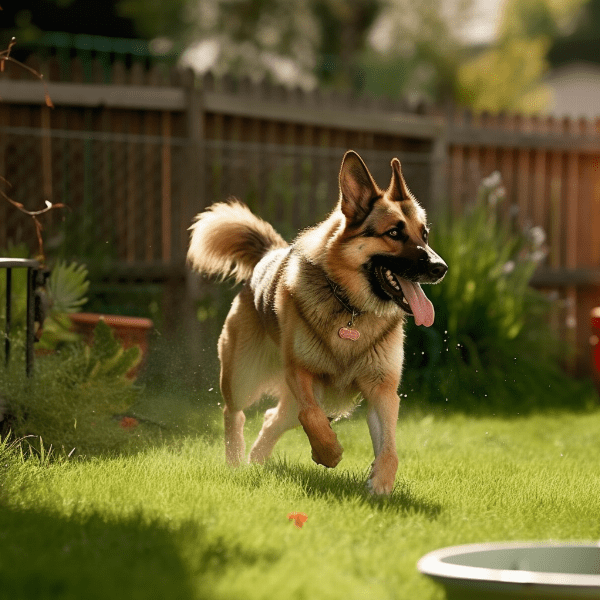
Utilizing Crate Training for Prevention
Crate training can be a highly effective tool for preventing dog marking in the house. When used properly, a crate can provide a safe and comfortable space for the dog while also preventing accidents inside the house.
Choose the Right Size Crate
Choosing the right size crate is important for successful crate training. The crate should be large enough for the dog to stand up, turn around, and lie down comfortably, but not so large that they have enough room to use one end as a bathroom and the other for sleeping.
Introduce the Crate Gradually
Introducing the crate gradually is important for successful crate training. Start by placing the crate in a comfortable and familiar area, and allow the dog to explore it on their own. Encourage them to go inside by placing treats or toys inside, and gradually increase the amount of time they spend inside.
Limit Time in the Crate
It’s important not to leave the dog in the crate for extended periods of time. Dogs should be allowed to spend time outside of the crate for exercise and interaction with their owners. A general rule of thumb is to limit crate time to no more than four hours at a time.
Don’t Use the Crate for Punishment
The crate should never be used as a form of punishment. This can cause the dog to associate the crate with negative experiences and make crate training less effective. Instead, the crate should be seen as a positive and comfortable space for the dog.
Utilizing crate training can be an effective tool for preventing dog marking in the house. By choosing the right size crate, introducing it gradually, using positive reinforcement, limiting time in the crate, and avoiding its use for punishment, owners can successfully train their dogs to use the crate and prevent accidents inside the house.
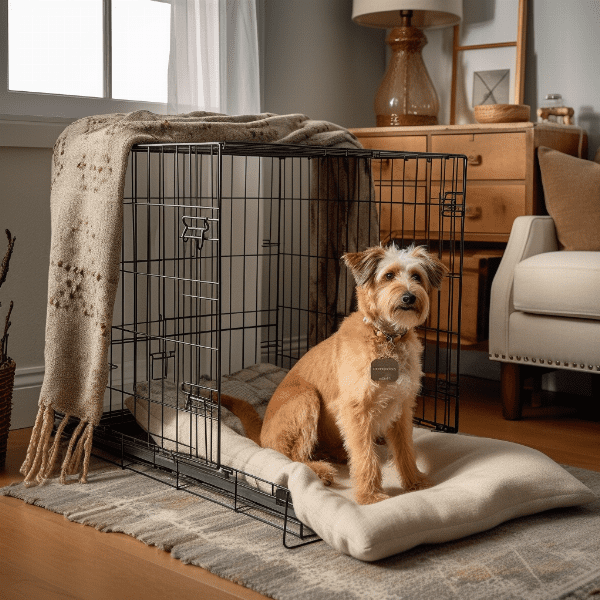
Avoiding Punishment as a Training Method
Why Punishment Doesn’t Work
Punishment doesn’t work as a training method for several reasons. Firstly, it can cause the dog to become anxious or fearful, which can lead to more problem behaviors. Secondly, it doesn’t teach the dog what to do instead of the problem behavior. Punishment only teaches the dog what not to do, but doesn’t offer an alternative behavior to replace the problem behavior.
Identify Triggers and Address Them Proactively
Identifying triggers that lead to dog marking is an important step in preventing the behavior. Once triggers are identified, it’s important to address them proactively. For example, if the dog marks in response to new visitors, it may be helpful to gradually introduce the dog to visitors over time and provide positive reinforcement for desirable behaviors.
Seek Professional Help if Necessary
Avoiding punishment as a training method is essential for preventing dog marking in the house. By using positive reinforcement instead, identifying triggers and addressing them proactively, and seeking professional help if necessary, owners can effectively prevent the behavior and promote positive training outcomes.
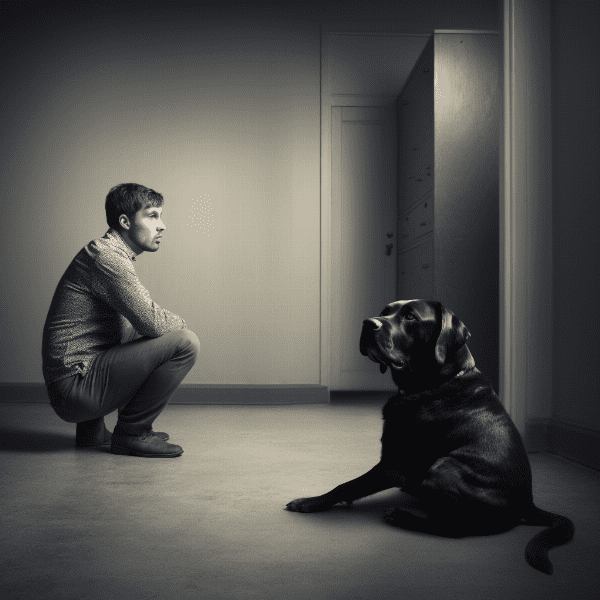
Consistent Positive Reinforcement for Desired Behaviors
Consistent positive reinforcement is an effective tool for preventing dog marking in the house. This involves rewarding the dog for desirable behaviors, such as going to the bathroom outside or not marking inside the house. Here are some tips for consistent positive reinforcement:
Use Treats and Affection
Using treats and affection is a powerful tool for positive reinforcement. When the dog performs a desirable behavior, such as going to the bathroom outside or not marking inside the house, praise and reward them with treats or affection. This helps to reinforce the behavior and encourages the dog to repeat it in the future.
Be Consistent
Consistency is key when it comes to positive reinforcement. The dog needs to receive consistent rewards for desirable behaviors in order for the behavior to become a habit. It’s important to be patient and consistent over time, as it can take several weeks or even months for the behavior to become fully established.
Reinforce the Behavior Immediately
Reinforcing the behavior immediately is important for successful positive reinforcement. The dog needs to associate the behavior with the reward in order for it to be effective. Praise and reward the dog as soon as they perform the desirable behavior, such as immediately after going to the bathroom outside or immediately after not marking inside the house.
Use Verbal Cues
Using verbal cues can help to reinforce desirable behaviors over time. For example, using a consistent phrase such as “good boy” or “good girl” every time the dog goes to the bathroom outside or not marks inside the house can help to reinforce the behavior and encourage the dog to repeat it in the future.
Avoid Punishment
As mentioned before, punishment is not an effective training method for preventing dog marking in the house. Punishing the dog for marking can actually make the problem worse and lead to other behavior issues. Instead, positive reinforcement and other proactive training methods should be used.
Consistent positive reinforcement is an effective tool for preventing dog marking in the house. By using treats and affection, being consistent, reinforcing the behavior immediately, using verbal cues, and avoiding punishment, owners can effectively prevent the behavior and promote positive training outcomes.

Cleaning Up Accidents Appropriately
Cleaning up accidents appropriately is important for preventing dog marking in the house. If the scent of urine or feces remains, the dog may be more likely to mark in that area again. Here are some tips for cleaning up accidents appropriately:
Act Quickly
Acting quickly is important when cleaning up accidents. The longer the urine or feces remains on the surface, the more likely it is that the scent will linger and attract the dog back to that spot. It’s important to clean up accidents as soon as possible to prevent this from happening.
Use an Enzymatic Cleaner
Using an enzymatic cleaner is important for effectively removing the scent of urine or feces. Enzymatic cleaners break down the proteins in the urine or feces, which helps to eliminate the scent and prevent the dog from being attracted back to that spot. It’s important to use an enzymatic cleaner specifically designed for pet urine and feces.
Soak the Area
Soaking the area with the enzymatic cleaner is important for effectively removing the scent. The cleaner should be allowed to sit on the surface for several minutes to fully penetrate the area. After soaking, the area should be blotted with a clean towel to remove excess moisture.
Repeat as Necessary
If the accident is particularly large or has been left for an extended period, it may be necessary to repeat the cleaning process several times to fully eliminate the scent. It’s important to continue using the enzymatic cleaner until the scent is completely eliminated.
Limit Access to Problematic Areas
Cleaning up accidents appropriately is an important component of preventing dog marking in the house. By acting quickly, using an enzymatic cleaner, soaking the area, repeating as necessary, and limiting access to problematic areas, owners can effectively eliminate the scent and prevent accidents from occurring in the future.

Limiting Access to Problematic Areas
Limiting the dog’s access to problematic areas is an important component of preventing dog marking in the house. This may involve closing off certain rooms or using baby gates to prevent access to certain areas. Here are some tips for limiting access to problematic areas:
Identify Problematic Areas
Identifying problematic areas is the first step in limiting access. This may include areas where the dog has previously marked, areas where they are more likely to mark, or areas with valuable or fragile items that could be damaged.
Use Baby Gates
Using baby gates is an effective way to limit the dog’s access to certain areas. Baby gates can be used to block off entire rooms or to restrict access to certain areas within a room. It’s important to use a sturdy gate that the dog cannot easily knock over or jump over.
Close Doors
Closing doors is another effective way to limit the dog’s access to problematic areas. This may involve closing bedroom doors or doors to certain rooms where the dog is not allowed. It’s important to ensure that the doors are securely closed and that the dog cannot push them open.
Use Positive Reinforcement
Using positive reinforcement can help to encourage the dog to stay in designated areas. When the dog stays in an appropriate area, such as a designated bed or crate, praise and reward them with treats or affection. This helps to reinforce the desirable behavior and encourages the dog to stay in that area.
Gradually Increase Access
As the dog becomes more reliable with housetraining, access to problematic areas can be gradually increased over time. This may involve allowing the dog into a previously restricted room or increasing the amount of time they spend in a certain area.
Limiting the dog’s access to problematic areas is an important component of preventing dog marking in the house. By identifying problematic areas, using baby gates or closing doors, using positive reinforcement, and gradually increasing access over time, owners can effectively prevent the behavior and promote positive training outcomes.
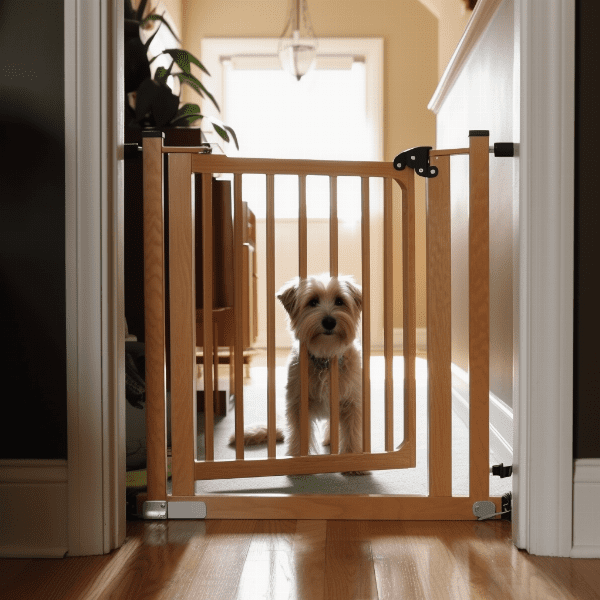
Seeking Professional Help for Persistent Marking Behaviors
If the dog’s marking behavior persists despite consistent positive reinforcement and other proactive training methods, it may be necessary to seek professional help. A veterinarian or a professional dog trainer can help identify any underlying medical or behavioral issues that may be contributing to the problem. Here are some tips for seeking professional help:
Consult with a Veterinarian
Consulting with a veterinarian is important for ruling out any underlying medical issues that may be contributing to the problem. Medical issues such as urinary tract infections or other medical conditions can cause dogs to mark inappropriately. The veterinarian can perform a physical examination and recommend any necessary tests or treatments.
Consult with a Professional Dog Trainer
Consulting with a professional dog trainer can be helpful for addressing persistent marking behavior. The trainer can assess the dog’s behavior and provide guidance on training methods and techniques that may be more effective. They may also recommend specific training tools or equipment that can be used to prevent the behavior.
Consider Medication
In some cases, medication may be necessary to address persistent marking behavior. A veterinarian can prescribe medication to help address underlying behavioral issues or anxiety that may be contributing to the problem. It’s important to consult with a veterinarian before starting any medication regimen.
.
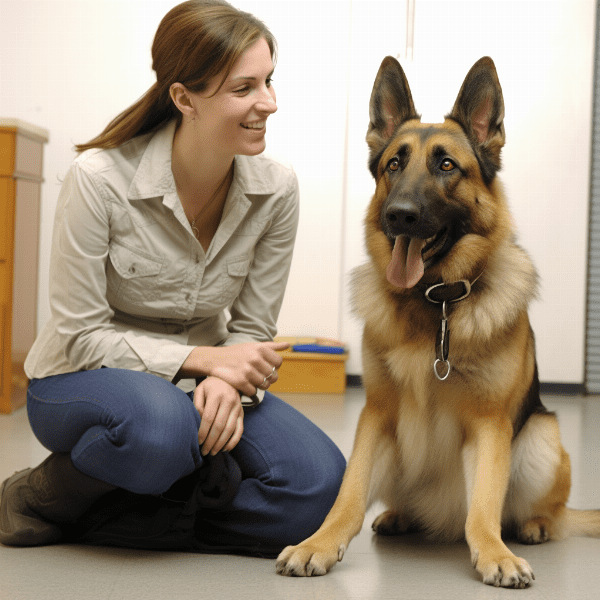
Maintaining a Consistent Routine for Your Dog
Maintaining a consistent routine is an important component of preventing dog marking in the house. Dogs thrive on routine and predictability, and having a consistent routine can help to reduce stress and anxiety, which can contribute to problem behaviors. Here are some tips for maintaining a consistent routine for your dog:
Establish a Daily Schedule
Establishing a daily schedule is an important part of maintaining a consistent routine. This may involve setting specific times for feeding, exercise, playtime, and housetraining. It’s important to stick to the schedule as closely as possible to help the dog develop a routine and become more predictable.
Provide Consistent Training and Reinforcement
Providing consistent training and reinforcement is also important for maintaining a consistent routine. This may involve using consistent verbal cues and positive reinforcement for desirable behaviors, as well as avoiding punishment as a training method.
Ensure Adequate Exercise and Mental Stimulation
Ensuring adequate exercise and mental stimulation is important for preventing problem behaviors such as dog marking. Dogs that are bored or under-stimulated are more likely to engage in destructive or inappropriate behaviors. Providing daily exercise and mental stimulation, such as puzzle toys or training games, can help to prevent these behaviors.
Maintain Consistent Rules and Boundaries
Maintaining consistent rules and boundaries is also important for preventing dog marking in the house. This may involve setting boundaries for areas where the dog is allowed to go, as well as rules for behavior such as not jumping on furniture or not begging at the table. Consistency in enforcing these rules and boundaries is important for establishing a routine and preventing problem behaviors.
Be Patient and Persistent
Maintaining a consistent routine for your dog can take time and patience. It’s important to be patient and persistent in establishing a routine and enforcing rules and boundaries. Consistency is key, and over time the dog will become more predictable and less likely to engage in problem behaviors.
Maintaining a consistent routine for your dog is an important component of preventing dog marking in the house. By establishing a daily schedule, providing consistent training and reinforcement, ensuring adequate exercise and mental stimulation, maintaining consistent rules and boundaries, and being patient and persistent, owners can effectively prevent the behavior and promote positive training outcomes.
